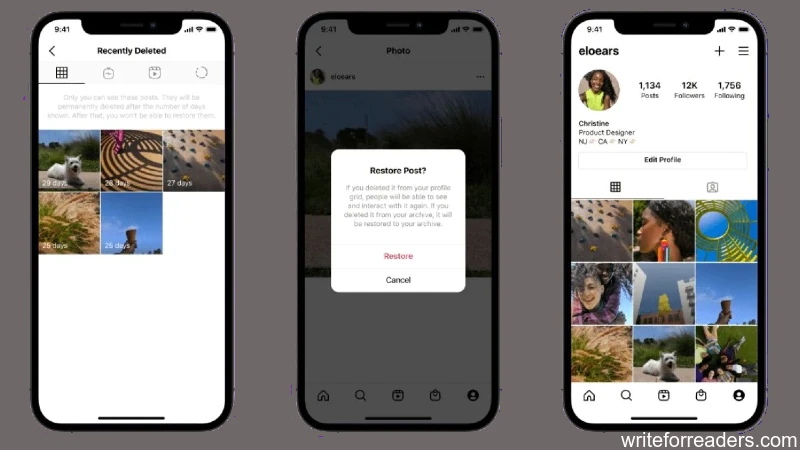What is Android 10 (Q)? What is the Features of Android 10 (Q)?

Table of Contents
What is Android 10 (Q)?
Google has released the first beta version of Android “Q” specifically for Pixel phones on March 13, 2019, including the first generation Pixel and Pixel XL devices, which have been expanded to support popular search. Six beta or candidate versions were released before the final release, which is currently scheduled for the third quarter of 2019.
Android 10 (Q) (coded Android Q during development) is the tenth major release to come and the 17th release of the Android mobile operating system. Currently in public beta and the final release of Android 10 is scheduled for September 3, 2019.
Users have more control over application access to location information, shared files, and storage such as photos and videos. Other useful changes: Instead of changing the focus of the application automatically on background activities (such as alarms or phone calls), application manufacturers can set high priority notifications to be sent first.
Android 10 Beta 3 also introduces a new feature – scoped storage – that lets users control how apps access external storage (for example, on a Micro-SD card). It also better protects users from being identified by restricting access to device identifiers that cannot be rebooted, such as the serial number and / or IMEI of your cell-phone, and shuffles MAC addresses when connecting to other Wi-Fi networks.
These are probably some of the most difficult changes for Android 10 developers. That is why the Android Developers blog states, “We offer these changes early so you have as much preparation time as possible.”
Features of Android 10 (Q)
Android 10 introduces an updated full screen gesture system that allows you to swipe, for example, from two sides of the screen to get to the home screen, scroll up and hold to access View and drag diagonally Screen angles to activate Google Assistant, and drag the gesture bar on the bottom of the screen to switch between applications. Support for this movement is mandatory, but OEMs can add their own movements to this basic movement. The previous navigation style with three buttons is still supported. It has been found that using gestures to move edges as “return” commands creates potential conflicts with applications that use sidebar menus and other finger-accessible functions. The API can be used by applications to prevent deactivating background movements in certain screen areas. Additionally, sensitivity controls have been added to adjust the size of the target area and activate movement. Google determines this later. The drawer widget is hidden by long pressing near the edge of the screen and then opening it.
With a feature called “bubbles”, content from supported applications can be displayed in a pop-up layer (similar to the “chat head” feature of Facebook Messenger). The application can create bubbles through notifications. Examples of using this feature include chat applications and messages, reminders, and the latest tasks and updates. Bubbles are intended to replace the existing Overlay Permit, which was withdrawn for security reasons (due to the use of clicking malware) and for performance reasons. Application-side applications automatically lose Overlay permissions after 30 seconds, and the Play Store app loses Overlay permissions each time the device is restarted. Android 10 Go Edition fully prohibits the use of overlay permissions.
Android 10 includes a dark system level theme. Third-party applications can automatically enter dark themes when this mode is activated. The application can also configure the “preference box” for certain settings (such as an Internet connection and Wi-Fi settings if the application requires the Internet) using an overlay field so that users do not need to be outside the application.
Improvements have been made to the folder platform, including application continuity when modifying modes and modifying multiple windows so that all applications can run simultaneously (not only applications that are currently actively used and all others are considered “suspended”) and additional support for many Displays. “Direct Sharing” was taken over by “Sharing Shortcuts”. Applications can still return a list of direct release targets (for example, certain application and contact combinations) for use in the sharing menu. Unlike Direct Share, applications publish their goals in advance and need not be asked at runtime to improve performance.
Added support for MIDI controllers, AV1 video codecs, Opus audio codecs and HDR10 +. .There is also a new standard API for extracting in-depth information from camera shots, which can be used for more advanced effects.
Android 10 supports WPA3 authentication for Wi-Fi. Android 10 also supports Dual SIM Dual Standby (DSDS).
Privacy and Security
There are several important security and privacy changes on Android 10: Users can be prevented from accessing only location data if they are active in the foreground. There are also new restrictions when launching activities from background applications. Major changes to the Storage Permit named “Storage” are supported by Android 10 and are required for all Android 11 and newer applications. Applications only access files in external storage that they have created themselves (preferably located in application-specific directories) as well as audio, image and video files contained in music, photo, or video directories. Any other file can only be accessed through user intervention through the Storage Access Framework.
The application must have new privileged telephone read permission to read device IDs that cannot be reset, such as: IMEI number.











